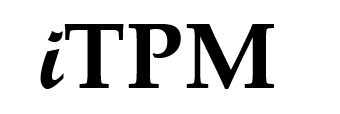What is trade promotion?
Trade Promotion is any expenditure paid directly by a manufacturer or distributor to the trade or retailer in a given industry. Trade Promotion can be a percent discount from list price, an amount per unit, and it can be a fixed or lump-sum payment for merchandising provided by the retailer. Examples of Trade Promotion include slotting allowances, performance allowances, case purchase allowances, scan-down allowances, rebates, manufacturer charge-backs and other customer-specific deals.
What is trade promotion management? (TPM)
TPM is defined as managing the entire life-cycle of trade promotions, and includes budgeting, planning, payments, processing of customer short-pays, deduction resolution, and post-promotion analysis. Trade promotion optimization is referred to as TPO, and the combination of TPM and TPO in one solution is sometimes abbreviated as TPx.
What is closed-loop TPM?
True Closed-loop TPM software has two attributes. First, the TPM solution must manage the entire life-cycle of promotion within one application. Second, the TPM solution must be tightly integrated to company's ERP. TPM must be integrated to critical ERP data elements, including the following:
- ERP customer, item and vendor master data.
- ERP invoices, including header and detail
- ERP A/P for check requests
- ERP A/R for short-pays, and re-pays of invalid deductions
What is CPG?
Consumer packaged goods (CPG) are consumable goods such as food and beverages, footwear and apparel, tobacco, and cleaning products. In general, CPGs are things that get used up and have to be replaced frequently, in contrast to items that people usually keep for a long time, such as cars and furniture. CG is short for consumer products.
What is the history of trade promotion?
Trade Promotion evolved by default, not by design. The Nixon administration enacted a price freeze in the early 1970’s to stop accelerating inflation on retail products in the USA. Just before the the price-freeze effective date, the CPG (consumer product goods) industry initiated a significant price increase to protect themselves against inevitable cost-of-goods increases.
Manufacturers were concerned that the Nixon price controls would prevent them from passing on increased manufacturing costs to end consumers. If cost increases couldn’t be passed on to consumers, the result could be squeezed margins, even bankruptcy.
To keep consumer prices the same through all this, CPG companies quickly dealt back the difference of the old price and controlled-price. Now you know how Trade Promotion was born, along with the challenges and opportunities for all the CPG stakeholders.
